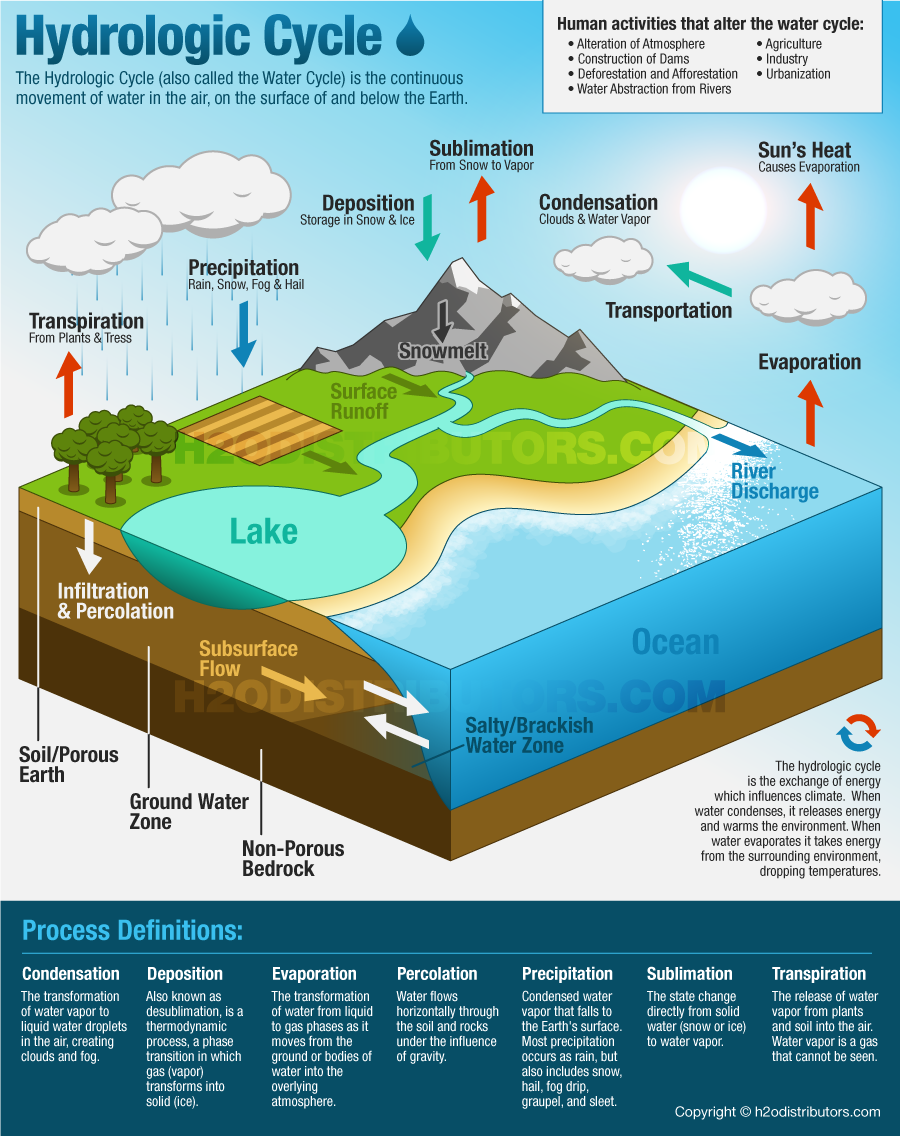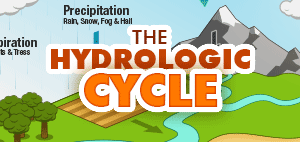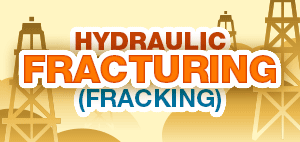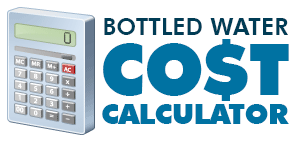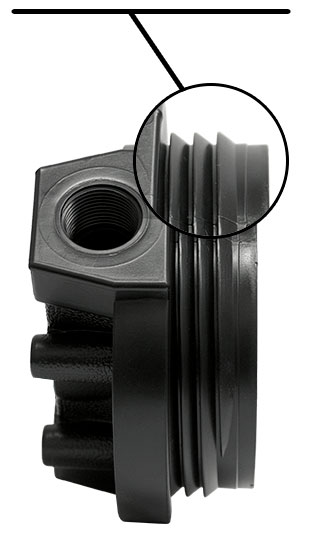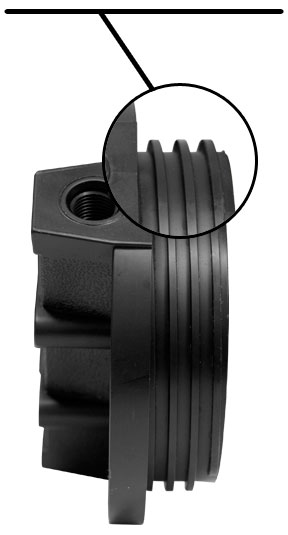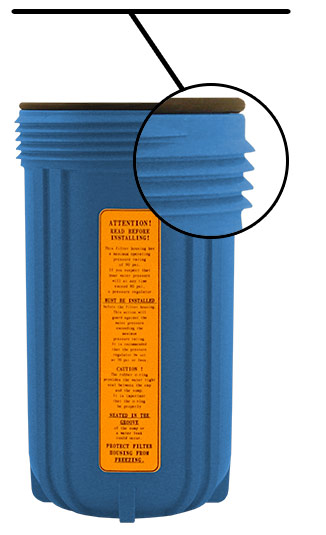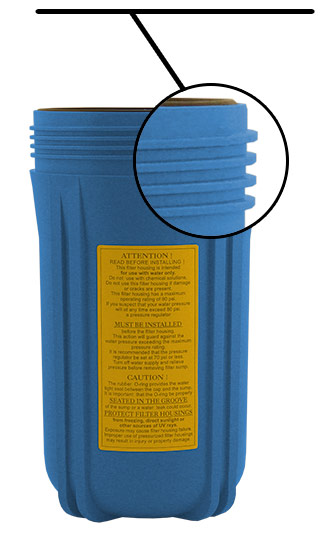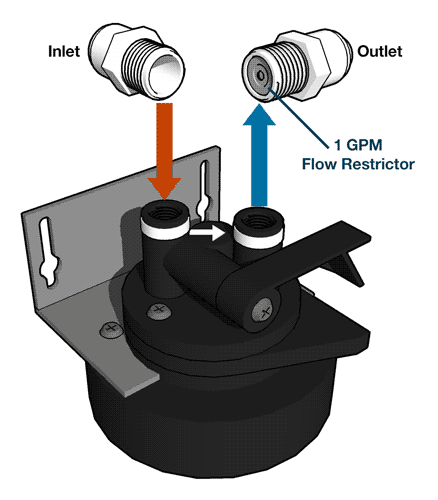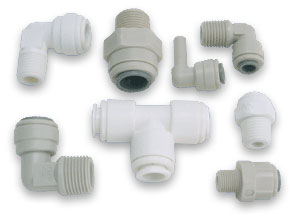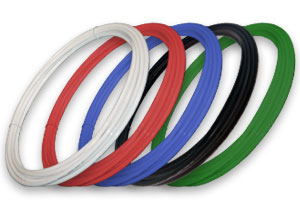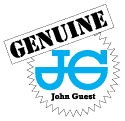Water Cycle Diagram
The Hydrologic Cycle (also called the Water Cycle) is the continuous movement of water in the air, on the surface of and below the Earth. This cycle is the exchange of energy which influences climate. When water condenses, it releases energy and warms the environment. When water evaporates it takes energy from the surrounding environment, dropping temperatures.
Process Definitions:
Condensation
The transformation of water vapor to liquid water droplets in the air, creating clouds and fog.
Deposition
Also known as desublimation, is a thermodynamic process, a phase transition in which gas (vapor) transforms into solid (ice).
Evaporation
The transformation of water from liquid to gas phases as it moves from the ground or bodies of water into the overlying atmosphere.
Percolation
Water flows horizontally through the soil and rocks under the influence of gravity.
Precipitation
Condensed water vapor that falls to the Earth’s surface. Most precipitation occurs as rain, but also includes snow, hail, fog drip, graupel, and sleet.
Sublimation
The state change directly from solid water (snow or ice) to water vapor.
Transpiration
The release of water vapor from plants and soil into the air. Water vapor is a gas that cannot be seen.
Drought Impact
Hotter temperatures would cause more evaporation from both open water and the soil. As a result, river and lake levels would drop, and soils would dry out. Plants would transpire more in the heat, drawing even more water from the ground. There would be less water on and in the ground just when hot weather was increasing water demand.

